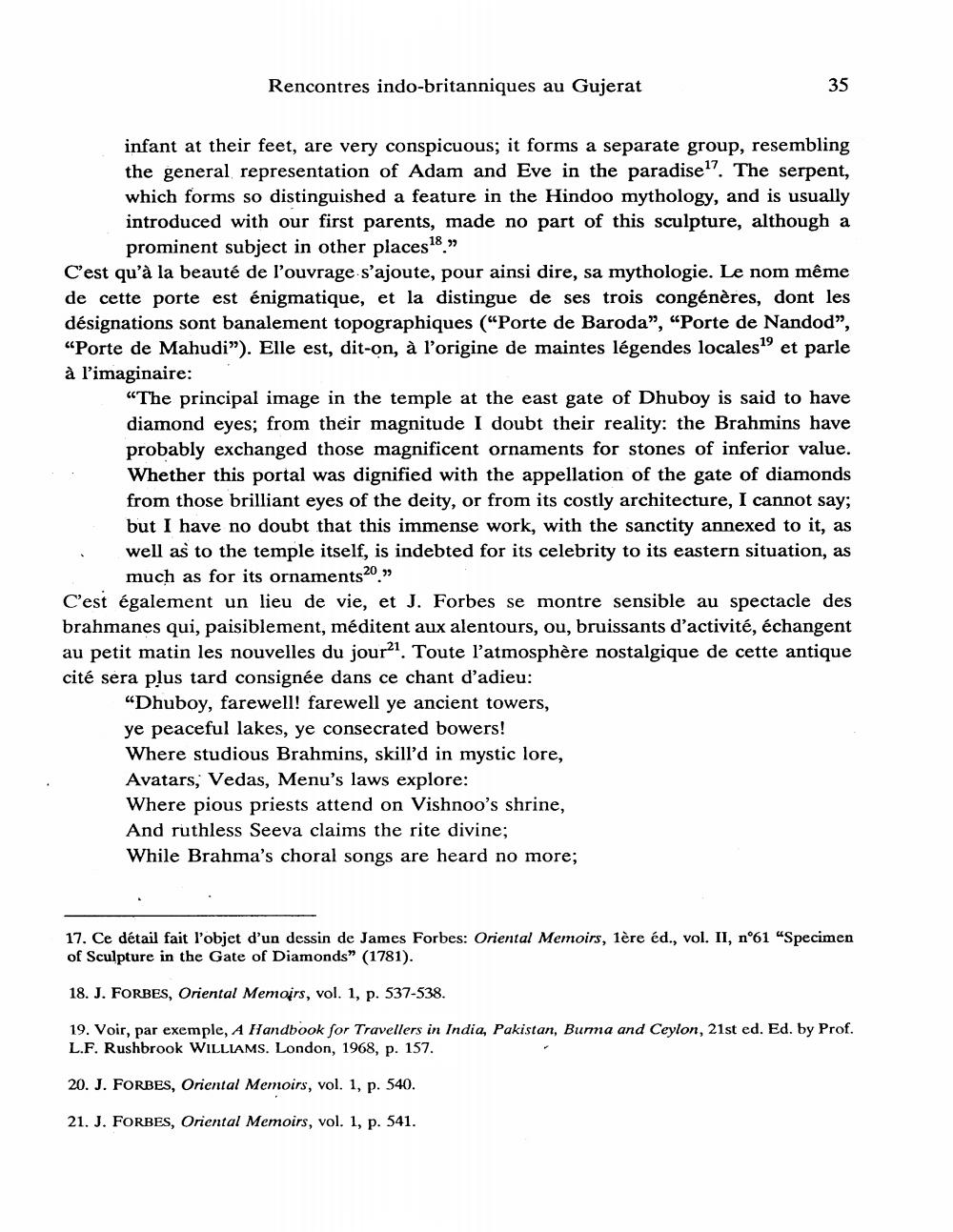Book Title: Rencontres Indo Britanniques Au Gujerat A Propos Dune Nouvelle De Dhumketu Author(s): Nalini Balbir Publisher: Nalini Balbir View full book textPage 5
________________ Rencontres indo-britanniques au Gujerat infant at their feet, are very conspicuous; it forms a separate group, resembling the general representation of Adam and Eve in the paradise"?. The serpent, which forms so distinguished a feature in the Hindoo mythology, and is usually introduced with our first parents, made no part of this sculpture, although a prominent subject in other places 18. C'est qu'à la beauté de l'ouvrage s'ajoute, pour ainsi dire, sa mythologie. Le nom même de cette porte est énigmatique, et la distingue de ses trois congénères, dont les désignations sont banalement topographiques ("Porte de Baroda”, “Porte de Nandod”, "Porte de Mahudi”). Elle est, dit-on, à l'origine de maintes légendes locales et parle à l'imaginaire: “The principal image in the temple at the east gate of Dhuboy is said to have diamond eyes; from their magnitude I doubt their reality: the Brahmins have probably exchanged those magnificent ornaments for stones of inferior value. Whether this portal was dignified with the appellation of the gate of diamonds from those brilliant eyes of the deity, or from its costly architecture, I cannot say; but I have no doubt that this immense work, with the sanctity annexed to it, as well as to the temple itself, is indebted for its celebrity to its eastern situation, as much as for its ornaments20.” C'est également un lieu de vie, et J. Forbes se montre sensible au spectacle des brahmanes qui, paisiblement, méditent aux alentours, ou, bruissants d'activité, échangent au petit matin les nouvelles du jourl. Toute l'atmosphère nostalgique de cette antique cité sera plus tard consignée dans ce chant d'adieu: "Dhuboy, farewell! farewell ye ancient towers, ye peaceful lakes, ye consecrated bowers! Where studious Brahmins, skill'd in mystic lore, Avatars, Vedas, Menu's laws explore: Where pious priests attend on Vishnoo's shrine, And ruthless Seeva claims the rite divine; While Brahma's choral songs are heard no more; 17. Ce détail fait l'objet d'un dessin de James Forbes: Oriental Memoirs, lère éd., vol. II, n°61 "Specimen of Sculpture in the Gate of Diamonds" (1781). 18. J. FORBES, Oriental Memoirs, vol. 1, p. 537-538. 19. Voir, par exemple, A Handbook for Travellers in India, Pakistan, Burma and Ceylon, 21st ed. Ed. by Prof. L.F. Rushbrook WILLIAMS. London, 1968, p. 157. 20. J. FORBES, Oriental Memoirs, vol. 1, p. 540. 21. J. FORBES, Oriental Memoirs, vol. 1, p. 541.Page Navigation
1 ... 3 4 5 6 7 8 9 10 11 12 13 14 15 16 17 18 19 20 21
